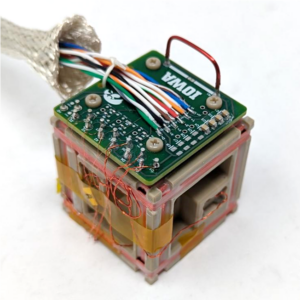The Technology program’s new Pathfinder project has the goal of helping technologies cross the critical gap between early-stage concepts and flight demonstration. Pathfinder will do this by investing in mature and existing technology projects that have an identified flight opportunity.
In the first Pathfinder, the University of Iowa will flight demonstrate next-generation magnetometer technologies. Prof. David Miles from the University of Iowa is partnering with Prof. Wojciech Miloch, from the University of Oslo, to provide a fluxgate magnetometer for the upcoming Norwegian ICI-5bis sounding rocket mission that will launch in November 2025 from the Andøya Space Sub-Orbital Range in Norway. ICI-5bis will study plasma turbulence and irregularities in the auroral ionosphere as a contribution to the international Grand Challenge Initiative – MLT (Mesosphere-Lower Thermosphere).

The new magnetometer incorporates two recent technology improvements. The sensor is based on the ‘Tesseract’ design from the MAGIC technology demonstration that will fly on the TRACERS Small Explorers mission in 2025. In this new and improved version, the sensor has been miniaturized down to “nanosatellite” scale, without sacrificing measurement performance. Referred to as the “Mini-T”, it also makes use of new electronics developed as part of the CHIMERA project (18-HTIDS18-001), which should allow for more radiation tolerant electronics to support infusion into missions that experience harsh radiation environments. This new sensor could be deployed in a nanosatellite constellation to study the dynamics of Earth’s magnetosphere or deployed into the hostile environment of the Earth’s Van Allen Radiation Belts.

